For a while now, the tablet industry has been rather boring. That’s not due to the lack of compelling devices, but because of lopsided competition. Apple’s iPads have reigned supreme, and with the arrival of iPadOS, Apple made it clear that it was serious at playing the tablet game.
The dominance has been particularly evident at the entry level, where the $329 iPad has been the default choice for an affordable, reliable tablet. That’s not the case anymore in 2022. The “entry-level” 10th-gen iPad now starts at $449. It looks fresh, offers USB-C nirvana, and comes with a new Magic Keyboard to sell its computing chops.

Sounds great, right? It is — except this is not the best tablet-style computing machine at its asking price.
That honor belongs to the Samsung Galaxy Tab S8. I’ve used both tablets as my primary computing machine extensively, and it’s almost shocking to see that the Samsung tablet does the tablet – and the computing – part better than the iPad.
Spend your dollars where there’s value
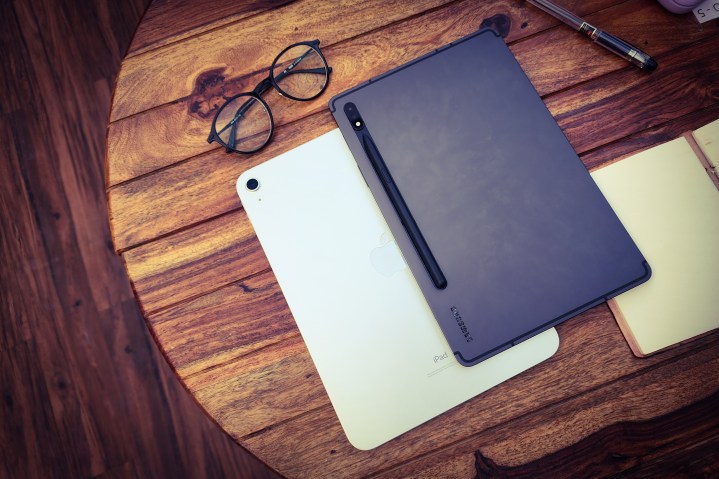
Let’s start with the cart value equation first. The Galaxy Tab S8 starts at $549, but offers double the storage for the price compared to the $449 you shell out for the 64GB iPad. The value gulf quickly becomes apparent as you go for extra storage.
Samsung charges $579 for the Galaxy Tab S8’s 256GB Wi-Fi model, while Apple jumps ahead with a $599 price tag for the iPad’s 256GB configuration. It’s all downhill from there for Apple. Both Samsung and Apple sell a two-part case, which includes a kickstand in one half and a keyboard + trackpad combo in the other half.
Both keyboards are of acceptable quality, but if you prefer full-fledged function key shortcuts, Samsung’s keyboard is the better option for you. It’s just tailor-made for Windows PC users, I feel.
Neither keyboard is backlit, which is a bummer, as Microsoft offers that perk for half the price on its own entry-level tablet. If it comes as any consolation, you can use the Samsung keyboard with both the Galaxy Tab S7 as well as the Galaxy Tab S8.
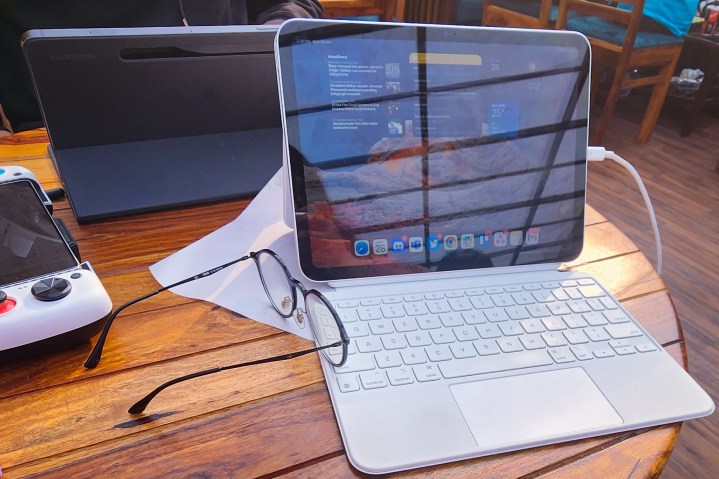
The 10th-gen iPad’s Magic Keyboard is an exclusive trinket. The dimensions of Apple’s tablet are off only by a hair from the iPad Air, and yet, you can’t pair the new keyboard with the latter. Conversely, you can’t use the magnetically levitating Magic Keyboard for the iPad Pro — which is again barely off by millimeters alongside the edges — with the 10th-gen iPad.
This keyboard fits in just fine with the iPad Air, though. I refuse to believe that Apple created this teeny-tiny size difference for accessory lock-in, which reeks of greed and only hurts buyers.
For gold coins, you get aging tech
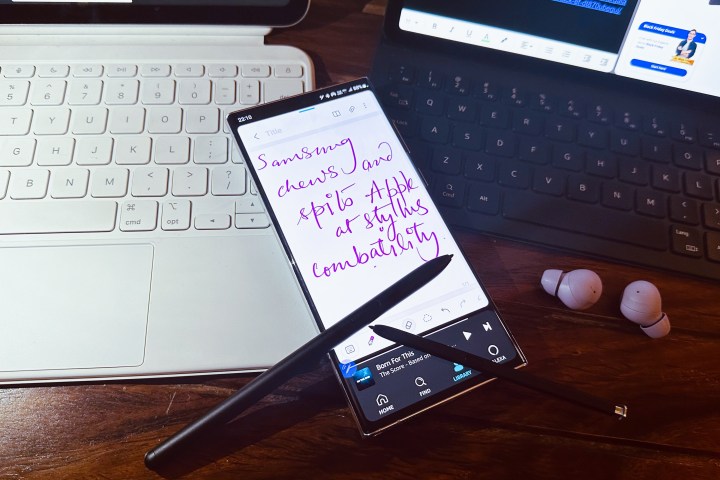
Let’s move to the stylus situation. Samsung offers an excellent stylus with all the pressure sensitivity and tilt recognition magic you need for free. It sticks magnetically to the back of the Tab S8 and gets charged simultaneously. There are no plug-to-charge hassles involved.
Oh, you can also use this stylus with other current-gen and older-gen Samsung tablets. I was pleasantly surprised to see that the tablet’s S Pen works flawlessly with the Galaxy S22 Ultra, too. This is the kind of cross-device compatibility that buyers deserve if they are paying top dollar for it.
Comparatively, the Apple Pencil situation for the vanilla iPad is frustratingly embarrassing. Apple wants you to pay $99 for it, all while lacking the convenience of a customizable double-tap gesture that you get on the second-gen Apple stylus. Plus, it also doesn’t charge magnetically.

Instead, the first-gen Apple Pencil needs to be charged by plugging it into the tablet’s charging port. It was already a horrendous design choice with the 9th-gen iPad, but to make matters worse, you now have to pay a Lightning tax because Apple removed its Lightning port from the iPad and put a USB-C port in its place.
That tax comes in the form of a $9 Lightning-to-USB-C dongle. Of course, Apple sells it separately, and — yeah — it looks worse. Plus, I just can’t get over the persistent fear of losing my precious little $9 dongle for juicing up an older-generation stylus.
Samsung serves up the superior hardware
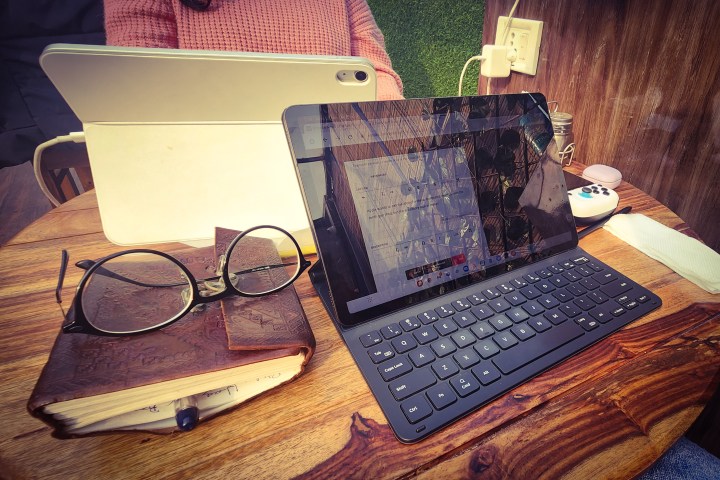
So, let’s do the math by using the 256GB storage model of each tablet. For the Galaxy Tab S8, the final bill for tablet + keyboard + stylus comes to $779. Plus, the Samsung online shop will give you a $150 store credit for buying this package, which you can spend toward buying other stuff like earbuds or smartwatches.
On the Apple Store, your final bill for the tablet + keyboard + stylus bundle comes to $947. When you factor in Samsung’s credit you get with the Galaxy Tab S8, you’re essentially spending hundreds of dollars less than what Apple will rob from your wallet.
On the hardware side, the Galaxy Tab S8 again runs circles around the iPad. It offers a smoother 120Hz refresh rate display, allows storage expansion up to 1TB via a microSD card, louder snd better-sounding speakers, and an additional 6-megapixel depth camera at the back.
The Galaxy Tab S8 also charges at over double the pace with a peak supported wattage of 45W, compared to the 20W limit for the 10th-gen iPad. But hardware laggardness is only half the story here. The real difference is in the software.
This Android experience means business

I never thought I would see the day when Android would be usable on a tablet. But the momentum that started with Android 12L was executed beautifully by Samsung with One UI 5, and the final result is extremely rewarding, for both work and play.
You get an app dock at the bottom of the screen on both devices. Samsung, however, lets you keep a minimized row of your dock apps always in your sight, instead of automatically hiding it, as is the case with iPadOS 16. A long press alongside the bottom edge will show, or hide, the dock on the Galaxy Tab S8 if you so desire. This functional versatility offers a more desktop-like experience comparable to iPadOS 16.
Now, let’s talk about app windows. With the One UI 5 update, Samsung has really upped the game and left the iPad software far behind. You can run as many app windows in pop-up mode as you want, and even adjust the transparency of app windows.
A simple drag-and-drop gesture from the dock is enough to run up to three apps in windowed mode in 2:1:1 format. And iPadOS 16 can only run two apps, while the third one has to be forced into a slide-over mode, which means it is not always in your view.
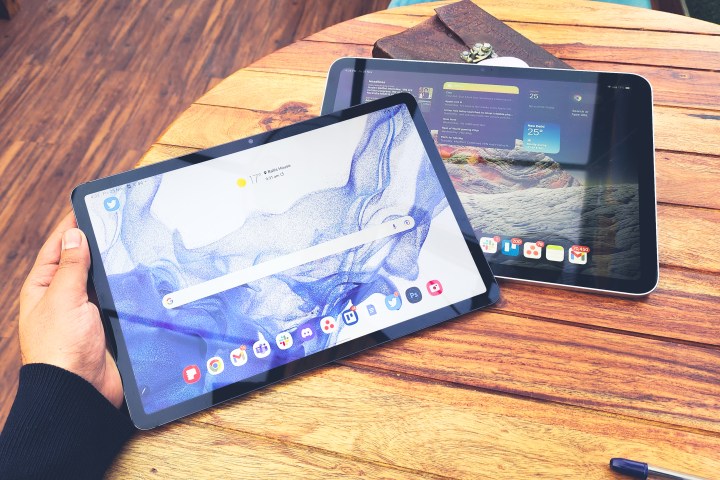
Even in split-screen mode, you can’t freely adjust the size of windows on the iPad, while One UI 5 lets you play with window sizing to your heart’s content. Plus, the wider aspect ratio of the Galaxy Tab S8’s screen ensures that apps look almost natural in split-screen mode. On the iPad’s squarish screen, the elongated view isn’t really a pleasing sight.
But that’s just the tip of the iceberg. The gestures for launching apps in split-screen mode, pop-up mode, or even a floating window format are simply miles ahead of iPadOS 16. Here’s a brief overview of what I am talking about:
The flexibility with split-screen multitasking & window resizing on @SamsungIndia Galaxy Tab S8 is a joy. Everytime I go back to the iPad, I sorely miss the convenience. It's mazingly fluid. Plus, the final cart value of Tab S8 with accessories is far lower than the iPad Gen 10. pic.twitter.com/QzcyEhYkdw
— Nadeemonics (@nsnadeemsarwar) November 28, 2022
One UI 5 has actually supercharged the experience on Samsung devices in a lot of ways, further widening the versatility gulf with the iPad. Plus, Labs is a great place to explore experimental features. With the side panel, Samsung exclusively puts your most frequently used utilities just a swipe away.
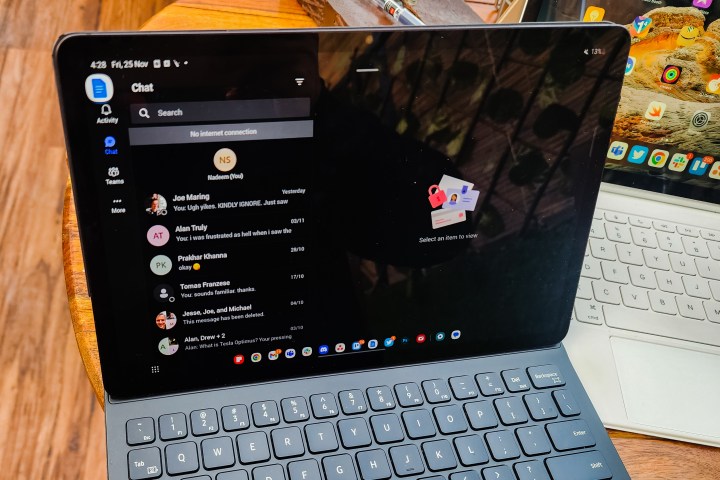
Widget stacking offers more customizability on One UI 5, the routines system is a boon for power users, and the lock screen customization options are also quite fun. Then there’s the flexibility of sideloading apps, something that isn’t possible at all on Apple’s side of the ecosystem.
Save for ecosystem-locked benefits like AirDrop, there are hardly any meaningful software-side tricks where the iPad can establish any notable lead over the Galaxy Tab S8. Call it an imitation of iPadOS, or honest inspiration, but One UI 5 is just better at this point in time — both for fun and play.
Your next tablet purchase is obvious

The Galaxy Tab S8 is a remarkable piece of tablet engineering. The hardware is as polished as the iPad, and even surpasses the Apple tablet at multiple parameters if you compare the internal specifications. But it’s not just the hardware where Samsung bests Apple.
With One UI 5 running atop Android 13, the software experience on the Galaxy Tab S8 offers more functional versatility than the iPad, especially if you are planning to get serious work done. Plus, Samsung’s commitment to five years’ worth of software updates is reassuring.
This holiday season, if you are planning to splurge on a tablet and haven’t signed a blood oath to Apple’s ecosystem, the Galaxy Tab S8 should be an easy pick over the 10th-generation iPad. Even if you’re eyeing the 5th-generation iPad Air, the Samsung tablet still offers better value without any deal-breaking compromises.



